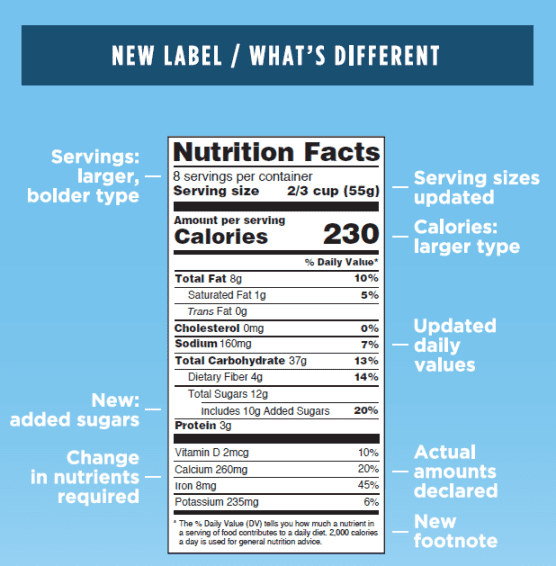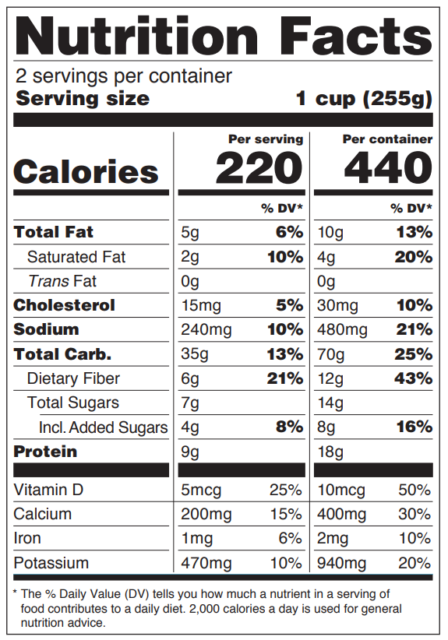Nutrition Facts Labels Are Getting a Makeover
Nutrition Facts Labels are intended to help consumers make informed food choices and maintain healthy dietary practices. Have you noticed a change to the nutrition facts label on some of your favorite foods? It’s been 20 years since the current nutrition facts label has been in use. Updated scientific information, new nutrition and public health research and more recent dietary recommendations are available. The new label will retain its basic format. It now features an updated look that should make it easier for you to make better informed food choices. You could see some of these changes the next time you go down the aisles of your local grocery store. Let’s take a look at some of the changes you can expect to see:
1. Features Refreshed Design

- The type size for “Calories”, “Servings per Container” and “Serving Size” are increasing, making them easier to spot.
- In addition to percent (%) Daily Value, labels will now feature the actual amount of Vitamin D, Calcium, Iron and Potassium. These are nutrients of concern for the population.
2. Reflects Updated Information About Nutrition Science
Nutrition science is evolving every day as new research is conducted and we better understand how the foods we eat impact our bodies and heath.
- “Added Sugars” will now be included on the label as a subset under “Total Sugars”. It will help consumers easily see the difference between products with naturally-occurring sugar, such as in fruit, as compared to added sugar found in fruit snacks.
- Calories from fat is being removed from the label. Research shows the type of fat is more important than the amount.
- Vitamins A and C will no longer be required on the label as Americans are getting ample amounts; however, Vitamin D and Potassium are typically lacking in people’s diets.
3. Updates Serving Sizes and Labeling Requirements for Certain Package Sizes
- Serving sizes will now be based on amounts people are actually eating, rather than what they should be eating. For example, the serving size of a soda is being changed from 8 ounces to 12 ounces (can of soda).
 Packages that contain between one and two servings, such as a 20 ounce soda, will be required to be labeled as one serving. They will show the calories and other nutrients for that entire package. This is because people typically consume the entire amount in one sitting.
Packages that contain between one and two servings, such as a 20 ounce soda, will be required to be labeled as one serving. They will show the calories and other nutrients for that entire package. This is because people typically consume the entire amount in one sitting.- Some products are larger than a single serving, but could be consumed in one sitting or multiple sittings. One example is a pint of ice cream. Manufacturers will have to provide “dual column” labels. These indicate the amount of calories and nutrients on both a “per serving” and “per package” basis.
When can you expect to see these changes?
Large manufacturers are required to implement these changes by January 1, 2020. Smaller manufacturers have until January 1, 2021. Some manufacturers have already made the switch.
The new look of the Nutrition Facts Label is easier to read. It better identifies the number of calories in a serving or full package. It also provides more relevant nutritional information. Consumers can now quickly “check serving size, consider the calories and choose nutrients wisely” using the updated label.

— Contributed by Jill Ladd, MPH, RD, LD